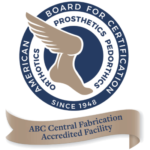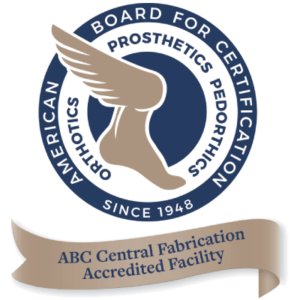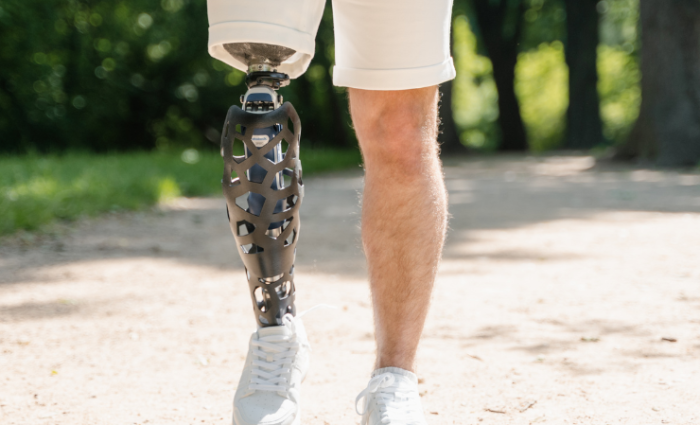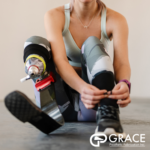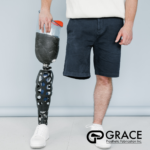Do prosthetic limbs cause pain?
Prosthetic limbs have come a long way, thanks to advancements in prosthetic technology. These artificial limbs give individuals with limb loss a chance to regain mobility and improve their quality of life. However, a common concern among those considering prosthetic devices is whether they are painful to use.
Understanding the factors that influence comfort and addressing potential pain points can help set realistic expectations and improve the overall experience for prosthetic users.
Understanding Prosthetic Discomfort
When discussing the potential pain associated with prosthetic limbs, it is essential to differentiate between discomfort and pain. Discomfort can be a natural part of the adjustment process, especially for new users.
It may include sensations of pressure, tightness, or mild irritation as the residual limb adapts to the prosthetic socket. However, pain that persists or worsens should be addressed promptly, as it could indicate an issue that needs professional attention.
Factors Influencing Pain
Several factors can influence the comfort and potential pain experienced by prosthetic limb users:
- Fit of the Prosthetic Socket: The prosthetic socket is the part of the prosthetic device that comes into direct contact with the residual limb. A well-fitting socket is crucial for comfort and function. An ill-fitting socket can cause pressure sores, skin irritation, and pain. Regular adjustments and fittings are necessary to ensure a proper fit, as the residual limb may change shape over time.
- Condition of the Residual Limb: The health and condition of the residual limb play a significant role in comfort. Swelling, scar tissue, and changes in the volume of the residual limb can affect how well the prosthetic leg fits and feels. Proper care and maintenance of the residual limb, including hygiene and skin care, are essential.
- Prosthetic Technology: Advances in prosthetic technology have significantly improved the comfort and functionality of prosthetic devices. Modern prosthetic limbs are designed with materials and features that enhance comfort, such as gel liners, adjustable sockets, and advanced suspension systems that reduce friction and pressure points.
- Activity Level and Range of Motion: The type of activities a person engages in and their range of motion can impact how the prosthetic limb feels. High-impact activities or excessive movement can cause more wear and tear on the prosthetic socket, leading to discomfort.
Managing and Reducing Pain
For those experiencing pain with their prosthetic limbs, there are several strategies to manage and reduce discomfort:
- Regular Check-Ups: Regular visits to your doctor can help identify and resolve issues early. This proactive approach ensures that the prosthetic socket remains a good fit and minimizes potential pain.
- Proper Limb Care: Taking good care of the residual limb is vital. This includes maintaining proper hygiene, moisturizing the skin, and monitoring for any signs of irritation or infection.
- Use of Liners and Padding: Gel liners and additional padding can provide extra cushioning and reduce pressure points within the prosthetic socket. These accessories can significantly enhance comfort and reduce the likelihood of pain.
- Gradual Adjustment: Gradually increasing the time spent wearing the prosthetic limb allows the residual limb to adapt to the new device. Starting with shorter periods and gradually extending the wear time can help minimize initial discomfort.
- Physical Therapy: Engaging in physical therapy can strengthen the muscles around the residual limb, improve range of motion, and enhance overall comfort. Physical therapists can also provide exercises tailored to individual needs to help adapt to the prosthetic limb.
Contact Grace Prosthetic Fabrication for Prosthetic Sockets
While some discomfort is normal during the initial adjustment period, persistent pain with prosthetic limbs should not be ignored. By understanding the factors that contribute to discomfort and taking proactive steps to manage and reduce pain, users can enjoy the benefits of prosthetic devices with minimal discomfort.
Advances in prosthetic technology continue to improve the fit, function, and comfort of artificial limbs, allowing individuals to regain their mobility and enhance their quality of life.
If you are experiencing pain with your prosthetic limb, consulting with a prosthetist is the best course of action to ensure a comfortable and functional fit.

